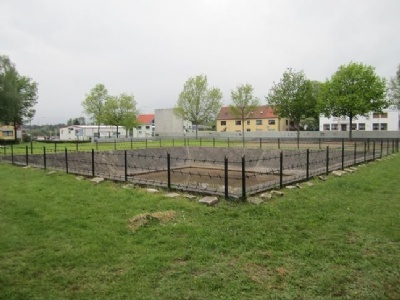Neu Bremm
In February 1943, the Gestapo established a prison in Saarbrücken called Neue Bremm. Initially it was built only for male prisoners and in the summer of 1943, between 400 – 500 male prisoners were imprisoned. In december 1943 a part of the camp were set up for female prisoners. In january 1944 between 200 – 400 female prisoners were imprisoned. The commander of the prison was SS-Untersturmführer Fritz Schmoll. The prisoners incarcerated were eastern European slave workers, political prisoners, anti-socials, prisoners of war and people of resistance movements. The idea was that prisoners would spend a shorter time before being sent of to other prisons or concentration camps. But usually for various reasons prisoners were detained much longer than planned. The prisoners were forced to clear up in the city after allied bombings. About 20,000 people went through the camp during its existence until December 1944. Between 600 – 800 people were imprisoned at one time and about 80 confirmed deaths are registered. Many of these were killed after they were drowned in the water reservoir in the middle of the camp.
Current status: Demolished with museum (2012).
Address: Behrener Strasse 7, 66117 Saarbrücken.
Get there: Car.
Follow up in books: Höhne, Heinz: The Order of the Death’s Head: The story of Hitler’s SS (1969).



The difference between prisons and concentration camps can often be subtle or quite insignificant when it comes to the treatment of prisoners, but there was a difference in organisation and administration. The concentration camps were under the control of SS – Wirtschafts Verwaltungshauptamt (SS Economic administration) while prisons set up by the Gestapo were under the jurisdiction of the Reichssicherheitshauptamt (Reich Central Security Agency).
The museum is located on the former male campground and is accessible around the clock. The only thing that is preserved is the water reservoar while the barracks are marked, which gives a good overview of the prison lay out. However, the female part of the prison is now part of an industrial area. Around the area there are information boards about the prison’s history.